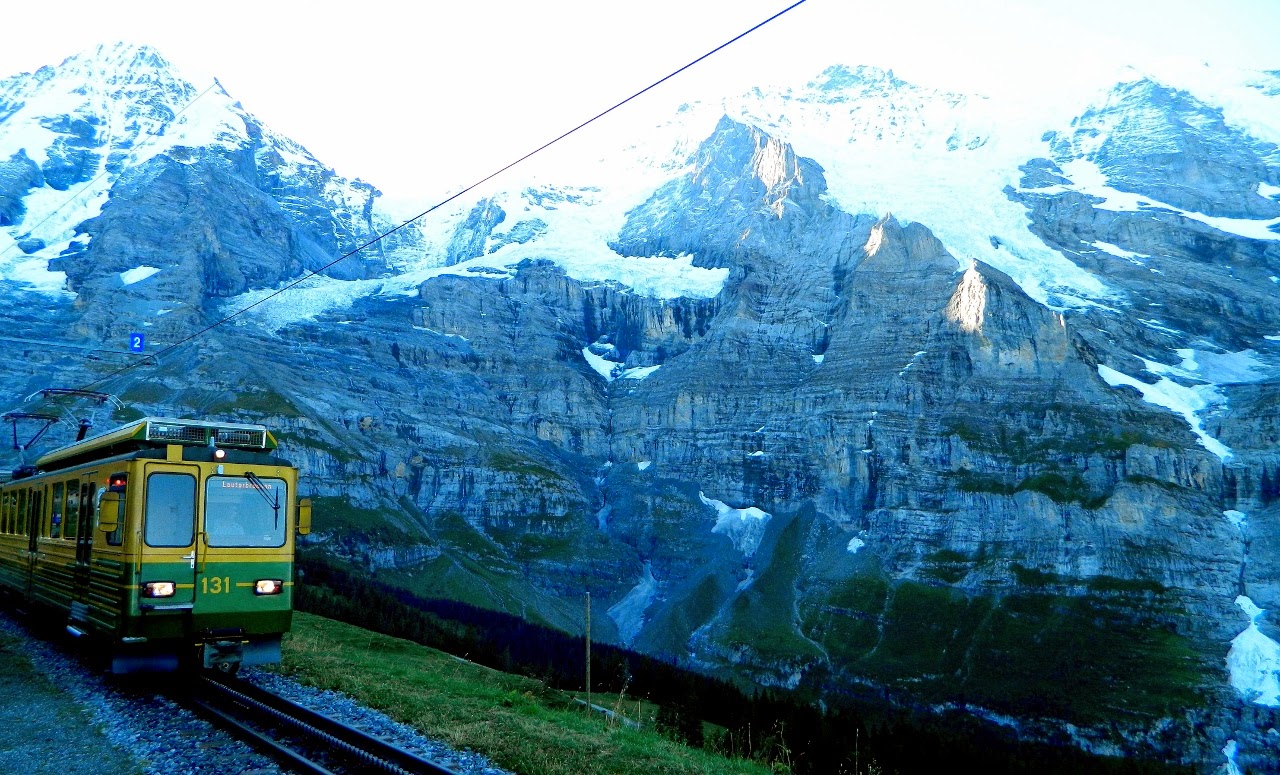We spent a day in Stams, a strange place. Our guide book told us it was one of the ‘best known towns in Tyrol, where Kings and Emperors took their holidays’.

Planning to spend a day exploring it, we actually took 10 minutes. Stams is essentially a large monastery, a dry ski slope and an eerily unkempt campsite. Under moody, low skies we spent an hour trying to find a shop but it doesn’t have one so returned to Bertha to plan the next few days in the Tyrol.

There was no reason to stay for a second day in Stams so we headed on to Hall in Tyrol. The aire, just outside the campsite at Hall was a delight. We were warmly welcomed by a charming Swiss lady who had us pitched, signed up for the next morning’s bread service and armed with local bus information in five friendly minutes of German chat.

The altstadt of Hall in Tyrol is faded but charming. Its heyday was from the 1400’s when it was home to a flourishing money mint.
Many of the old patrician houses still have decorative plasterwork or frescoes, but you have to hunt them out amongst newer, modern facades. We wound up and down its steep alleyways on our own as the town was quiet despite it being a Friday afternoon.

We collected some supplies and walked back across the fields for an experimental gourmet treat of pumpkin cannelloni. The weighty pumpkin had been with us since staying on a pumpkin farm in Emmental!
Using the local bus service we headed into Innsbruck for a day. Once through the large industrial and then urban sprawl we arrived at the busy central station.
We strolled down the wide and elegant shopping boulevard of Maria-Theresien Strasse with its designer shops and multi-storey department stores.
The historical centre sits alongside the wide, icy blue and glacial river Inn. Innsbruck is the capital of the Tyrol and has proudly kept its heritage buildings by keeping industry out of the centre.
A wedding party was gathering outside the Goldenes Dachl on Herzog-Friedrich-Strasse – Innsbruck’s most famous building – the house with a golden roof that is actually made of copper. It was commissioned by Maximilian I who wished to dispel rumours of his money worries.
Opposite is the beautiful Helblinghaus which straddles a corner and presents two sides of gorgeous rococo facades.

The winding medieval streets mix artisan shops with souvenir stalls and ‘speckerias’ – small caverns that serve up a range of sliced hams and sausages on chunky bread rolls. In the narrow alleyways the smell of smoky meat lingers all day.
Alongside the wide and fast-flowing river for some fresh air we admired Innsbruck’s setting in the valley bed and towered over by the Tyrol mountain ranges.

The Saturday covered market alongside the river boasted stalls piled high with seasonal veg, alpine cheeses, cured meats and (magic looking) mushrooms. We bought spinach Tyrolean Knödels for dinner.Having climbed the steep, spiral staircase inside the old town’s Stadtturm we had the treat of a panoramic view of the city from the balcony of the onion-domed roof.

Down at ground level another wedding party was under the golden roof, Americans were (rather rudely) taking photos and recording on their cameras and it was time for a very late lunch. Hot and a little weary we were gifted a jug of beer each by an errant waitress in a busy beer garden.
We munched sausages and sauerkraut watching wedding parties parade by on their way to probably the busiest registry office in Austria. We didn’t query the bill and enjoyed the free beer. Schuss Innsbruck!

